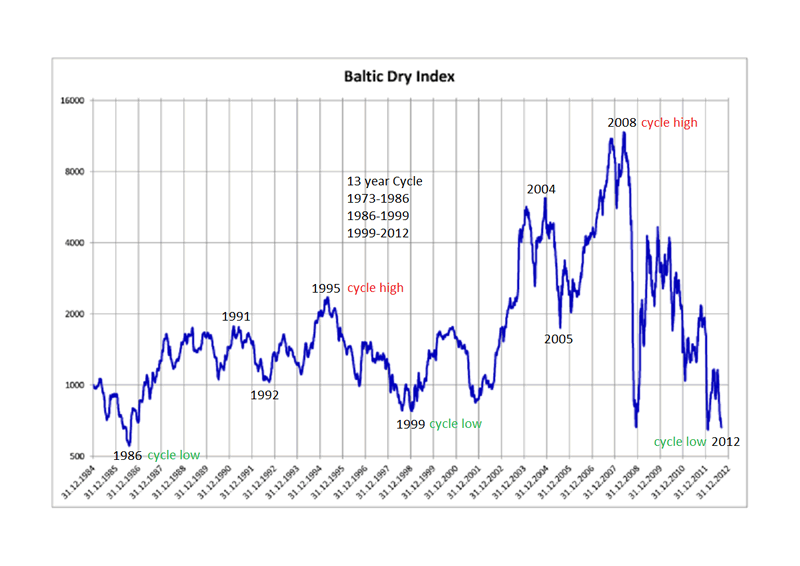
http://www.marketoracle.co.uk/images/2012/Sept/baltic_dry_index-1985.png
http://en.wikipedia.org/wiki/Baltic_Dry_Index Most directly, the index measures the demand for shipping capacity versus the supply of dry bulk carriers. The demand for shipping varies with the amount of cargo that is being traded or moved in various markets (supply and demand).
The supply of cargo ships is generally both tight and inelastic—it takes two years to build a new ship, and ships are too expensive to take out of circulation the way airlines park unneeded jets in deserts. So, marginal increases in demand can push the index higher quickly, and marginal demand decreases can cause the index to fall rapidly. e.g. "if you have 100 ships competing for 99 cargoes, rates go down, whereas if you've 99 ships competing for 100 cargoes, rates go up. In other words, small fleet changes and logistical matters can crash rates..."[5] The index indirectly measures global supply and demand for the commodities shipped aboard dry bulk carriers, such as building materials, coal,metallic ores, and grains.
Because dry bulk primarily consists of materials that function as raw material inputs to the production of intermediate or finished goods, such as concrete, electricity, steel, and food, the index is also seen as an efficient economic indicator of future economic growth and production. The BDI is termed a leading economic indicator because it predicts future economic activity.[6]